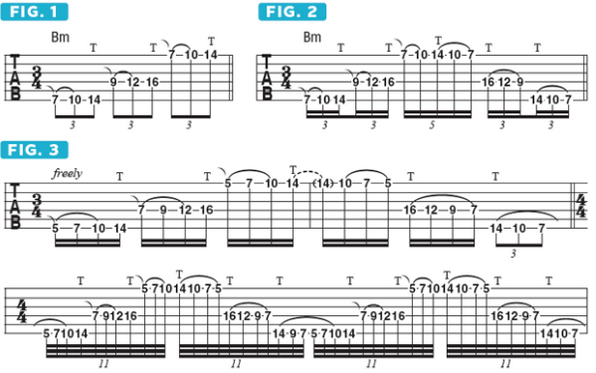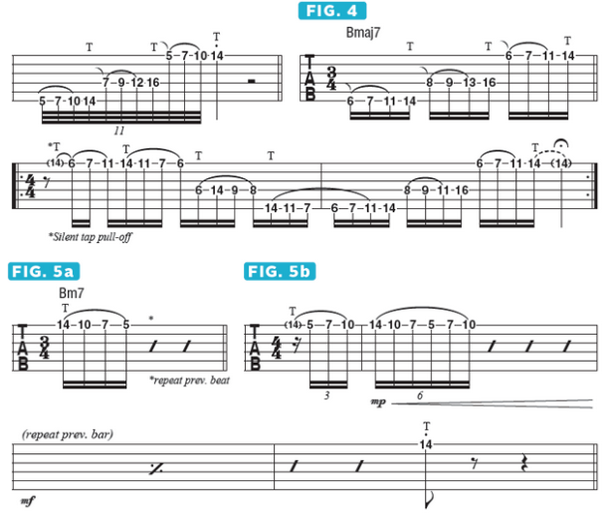Using String Skipping to Create Multi-Octave Tapped Arpeggios
How to employ fretboard tapping in conjunction with string skipping to achieve a very smooth and even sound when playing arpeggios.
This month I’d like to talk about the technique I use to perform the fast arpeggiated phrases on the song “A Wonderful Slippery Thing,” from my Erotic Cakes album.
For these licks, I employ fretboard tapping in conjunction with string skipping to achieve a very smooth and even sound throughout.
I know many guitarists prefer to use sweep picking when playing arpeggios, but to me, the sound of dragging the pick up and down across the strings is a little too abrasive and percussive.
In this month’s column, I’d like to demonstrate my basic approach to performing these types of arpeggios, which involves a combination of fretboard tapping and string skipping. My love for the sound of the saxophone inspired me to pursue this approach.
When sax players play fast arpeggios, they sound very fluid, liquid and bubbly. I devised a system that works for me, and the idea is to apply the concept in a variety of different ways.
The first question I ask myself is, “How many notes do I want to play in this arpeggio?” I then play each note once on one string before moving this specific note series to a different string.
For example, starting with a basic minor triad, which consists of three notes, I’ll play three notes on a given string and then move those same three notes to another string, as demonstrated in FIGURE 1. Here I’m playing the notes of a B minor triad—B, D and F#—on the sixth string, sounding the highest note with a fretboard tap. I then move these three notes over to the D string, execute them in the exact same way, and then repeat the process on the high E string.
You’ll notice that the “shape” on each string is identical, and I think this is not unlike the way pianists play arpeggios, in that they repeat the same fingering “shape” as they move to higher octaves. Just listen to the insane multioctave arpeggios that Art Tatum plays—I think there must be some logic like that going on.
If you are not used to playing in this way, the big challenge is hammering with the index finger to start each phrase on each string. Begin with just the first three notes on the sixth string, making sure they sound clear, with no extraneous noises. Then hop over two strings and up two frets, to the D string, and the shape is exactly the same. Strive to make these transitions seamless.
Now let’s play each three-note arpeggio in a repeated sequence, moving from low to high strings, back and forth, as shown in FIGURE 2. If I want a more complex arpeggio, I can add one note, the flat seventh, as I do in FIGURE 3.
If we transpose the idea to a major triad, we get FIGURE 4. To build up your technique, I suggest practicing each phrase on each string repeatedly, as shown in FIGURES 5a and 5b.


Get The Pick Newsletter
All the latest guitar news, interviews, lessons, reviews, deals and more, direct to your inbox!









![Joe Bonamassa [left] wears a deep blue suit and polka-dotted shirt and plays his green refin Strat; the late Irish blues legend Rory Gallagher [right] screams and inflicts some punishment on his heavily worn number one Stratocaster.](https://cdn.mos.cms.futurecdn.net/cw28h7UBcTVfTLs7p7eiLe.jpg)
